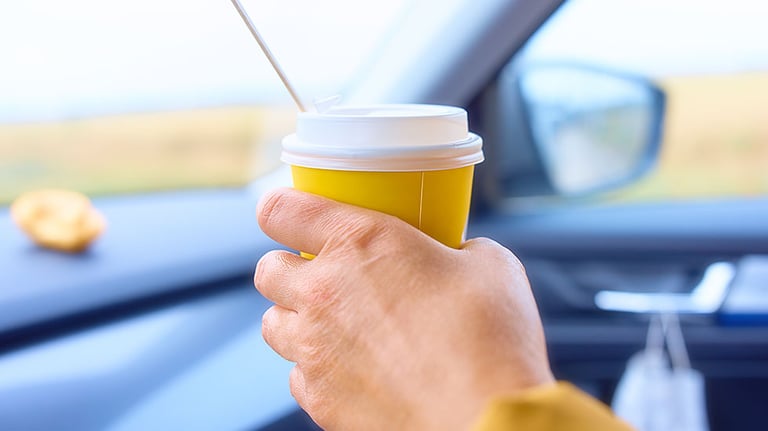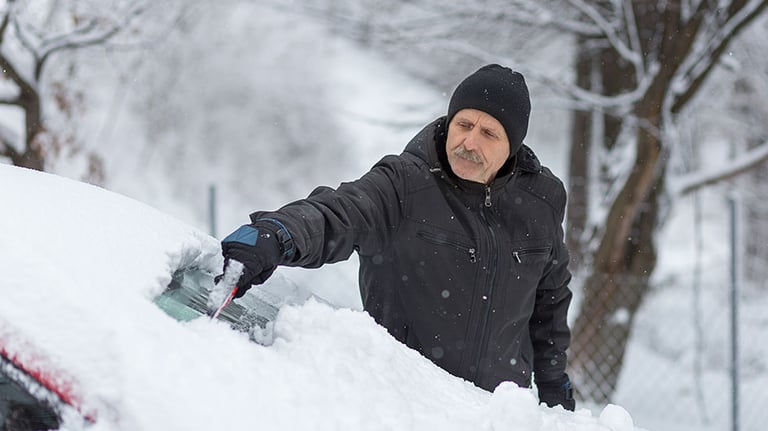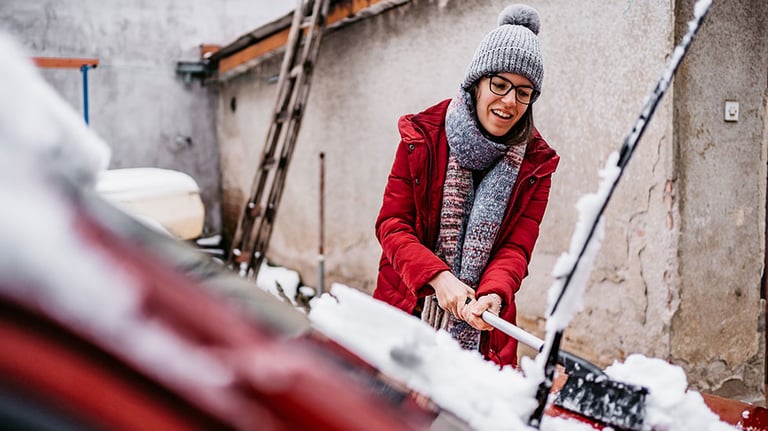

Depending on weather conditions, wintertime driving can get tricky. But while you keep your eyes on the road, another area needing attention are the items in your car—just in case you get stuck along the way.
Having certain items within your vehicle can help keep you warm and safe amid any possible issues. We’ve reached out to our experts at AAA to inquire about what winter-related items should be kept inside your automobile.

Non-perishable snacks and drinks
It’s best to have something to eat and sip on with you to sustain yourself for a long while. “You want to have a couple of bottles of water and you want to have a snack—granola bars or something like that,” said Troy Cox, a district director for AAA. “Especially if you have young children with you, it’s important “to have a snack that’s appropriate for their ages.”
Roadside safety kits
AAA sells roadside safety kits online containing every item you’ll need, from band-aids and bandages to “…a couple of [other] things that people don’t normally think about having,” said Cox.
Other winter weather accessories
Besides blankets, think about storing other accessories that fit with winter appeal. Gloves are a good essential to keep your hands from freezing, whether you’re remaining inside your vehicle or having to step outside. Cox advises to keep at least two sets of gloves in your car, in that the extra set is your backup in the case the other is missing or soaked. “Sooner or later, you’re going to use one pair that’s going to get wet.” And water-resistant ones are a plus.
Other good winter gear to store includes an extra hat and a scarf and perhaps a pair of snow pants or boots.

A shovel and ice scraper
Before you get in your car and drive away, you might come across tokens of acknowledgment by winter weather in effect–snow coverings and iced windows.
“You want an ice spacer with a brush on the end of it,” said Cox, because the combo helps clear off your car windows. Another tool to have on hand is a small shovel, in case you might need to remove or move snow around.

Windshield washer fuild
While Cox advises not to keep chemicals or gas in your car, which run the risk of being flammable, a jug of windshield washer fluid is a good exception for making sure your wiper blades can keep your windshield clean, visible, and free from road dust and salt.
Other wintertime car essentials include disposable hand and feet warmers, a flashlight, a tire pressure gauge, an umbrella, and battery jumper cables. Also, be sure to have your AAA membership registration on hand, in case you need to contact roadside assistance. “Make sure your membership is up to date,” said Cox.
“Even when the plan is to make a quick trip to the grocery store, drivers should dress for the weather,” said AAA public affairs manager Cindy Antrican. “That quick trip could turn into a long, difficult journey should your vehicle break down or you slide off the roadway.” Antrican also offered some winter car care tips:
- Motorists need to make sure they have adequate levels of antifreeze. Inadequate antifreeze can cause engine damage that may cost thousands of dollars to repair.
- A strong battery is critical when temperatures drop into the single digits. Make sure your battery has ample starting power. Battery life usually runs between three to five years; batteries older than that should be tested to avoid getting yourself stranded.
- To avoid frozen door or door locks, buy a lubricant that is available in most auto supply stores. It’s best to apply de-icing solution before the colder temperatures arrive.
- Check your tire pressure weekly to prevent a flat. For every 10 degrees the temperature drops, you may lose one pound of tire pressure.
- When temperatures drop to single digits or below, park your car in the garage. If you have no garage, select a place that is protected from wind and park your vehicle so the front grill is turned away from the wind or use a tarp or cardboard across the grill to protect the engine.
- Drivers are advised to keep gas tanks near the half-full mark to allow for extra running time, and to contend with possible delays caused by crashes along highways.
